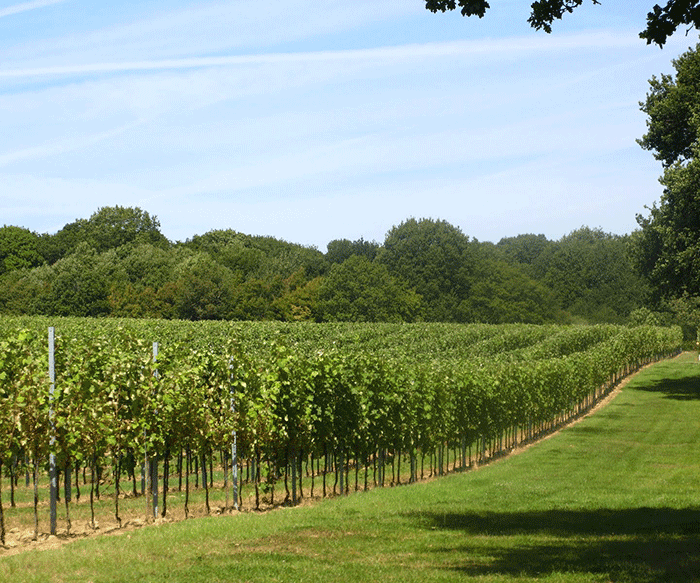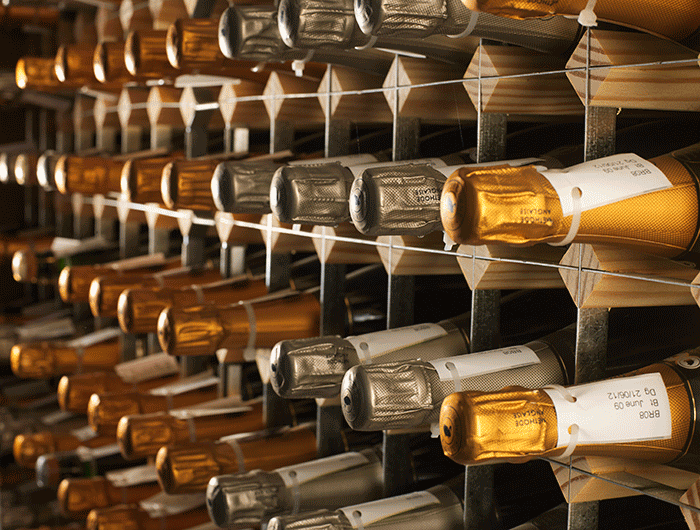Notes from the vineyard: Gusbourne Estate
Author: Guest Blogger
The first vines may have been planted a decade ago, but the history of Gusbourne Estate in Appledore, Kent, can be traced back somewhat further – to 1410 in fact. During the 16th century, the estate was known as ‘Gooseborne’, carrying the crest of three geese.
Gusbourne’s transformation into a winery began in 2003, when Andrew Weeber, a retired orthopaedic surgeon from South Africa, saw the estate’s potential for grape growing and decided to purchase it. By 2006, the very first vintages – Gusbourne Estate Brut Reserve 2006 and Gusbourne Estate Blanc de Blancs 2006 – were bottled. By the time I joined the team in 2013, Gusbourne’s reputation in the UK was well established.
We own 45.6 hectares of vineyards at Gusbourne Estate in Kent and a further 22 hectares in West Sussex all planted with classic varieties of Chardonnay, Pinot Noir and Pinot Meunier. Making wines from our own estate-grown grapes is an essential part of our wine making philosophy.
The Kent vineyards have a predominantly clay soil, with subsoils of sand, seashells and stones including sandstone and ironstone. These warm, rich soils are planted with predominantly Burgundy clones, the soil in combination with the Estate’s proximity to the coast and low elevation ensure that a high level of ripeness is regularly achieved. The use of grapes from lower yielding Burgundy clones in our sparkling wines is a significant point of difference and one of which we are proud.
The West Sussex vineyards are situated within the South Downs National Park, on the Selhurst Park Estate which neighbours Goodwood, near Chichester. The soils here are predominantly lime rich, chalk soils, with the exception of Downfield where the chalk ends and gives way to flint.
The Halnaker Vineyard in West Sussex, was planted in 2006 with Pinot Noir, Pinot Meunier and Chardonnay. The 2013 vintage will be the first one that has used fruit from Halnaker; Charlie Holland our Winemaker and I have spent a great deal of time looking at the blends and are excited about the quality of the Halnaker base wines and what they will contribute to our wines.
We start bottling on the 19th of May this year, but will have to wait at least three years before we taste the results. To see how we get on with bottling the 2013 wines, please tune in next month!
For more on Gusbourne Estate, go to its website, or to taste the wines view our selection on bbr.com





[…] CEO, introduces the estate, walks through the vineyards and prepares for bottling. Read the blog […]
We’ll I hope it gets a bit more interesting than this. This isn’t about following the growing season. I do like the wine.
Dear Doug,
Thank you for your comments. Initially we wanted to introduce Gusbourne to those less familiar with the company; in the next instalment I can promise more on the day-to-day of life in the vineyards. Do let us know what you think when that piece is posted mid-May.
All best,
Emily